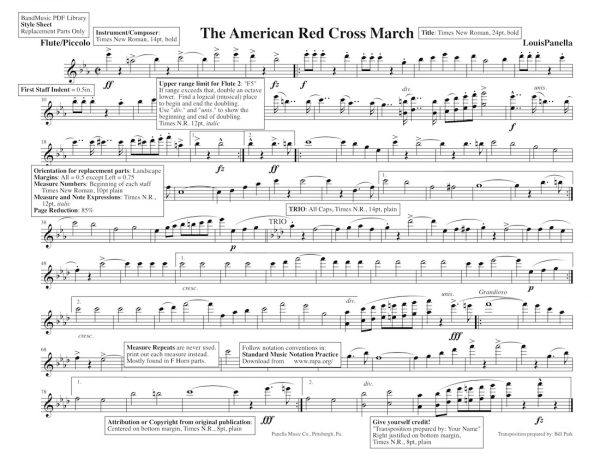
We adhere to principles of notation as outlined in the booklet Standard Music Notation Practice available from the Music Publishers’ Association and Music Educators National Conference, in addition to the Style Sheets from BandMusic PDF Library.
A few observations
We are looking for professional layout in transposed parts.
- If the original printed part is on one page, then the replacement should fit on one page. Adjust staves, measures and page reduction until it looks good.
- Make collisions go away. Dynamics, articulations and notes must not overlap.
- It often helps to follow the layout of the original part: use the same number of staves on each page and put the same number of measures on each staff as the original engraver did.
- Write out repeat measures originally published with ‘slash’ notation.
- Never carry over onto a fractional page.
There are often errors in the originals; they need to be fixed.
- Copy and paste all parts you are working on into a temporary score for playback.
- It often helps to play back the notation files in slow tempo to discover clunkers.
- If a sound is suspect, consider it an error and do what is needed to correct it.
- Complete harmonies can usually be found in Horns and Tuba.
- Resolve conflicts in chords, dynamics, repeats, articulations and phrasing–this is a judgement call.
Sibelius, Finale, MuseScore4, Dorico and their related notation programs are preferred. Our goal is always to make easily-read, unambiguous parts for modern players.
